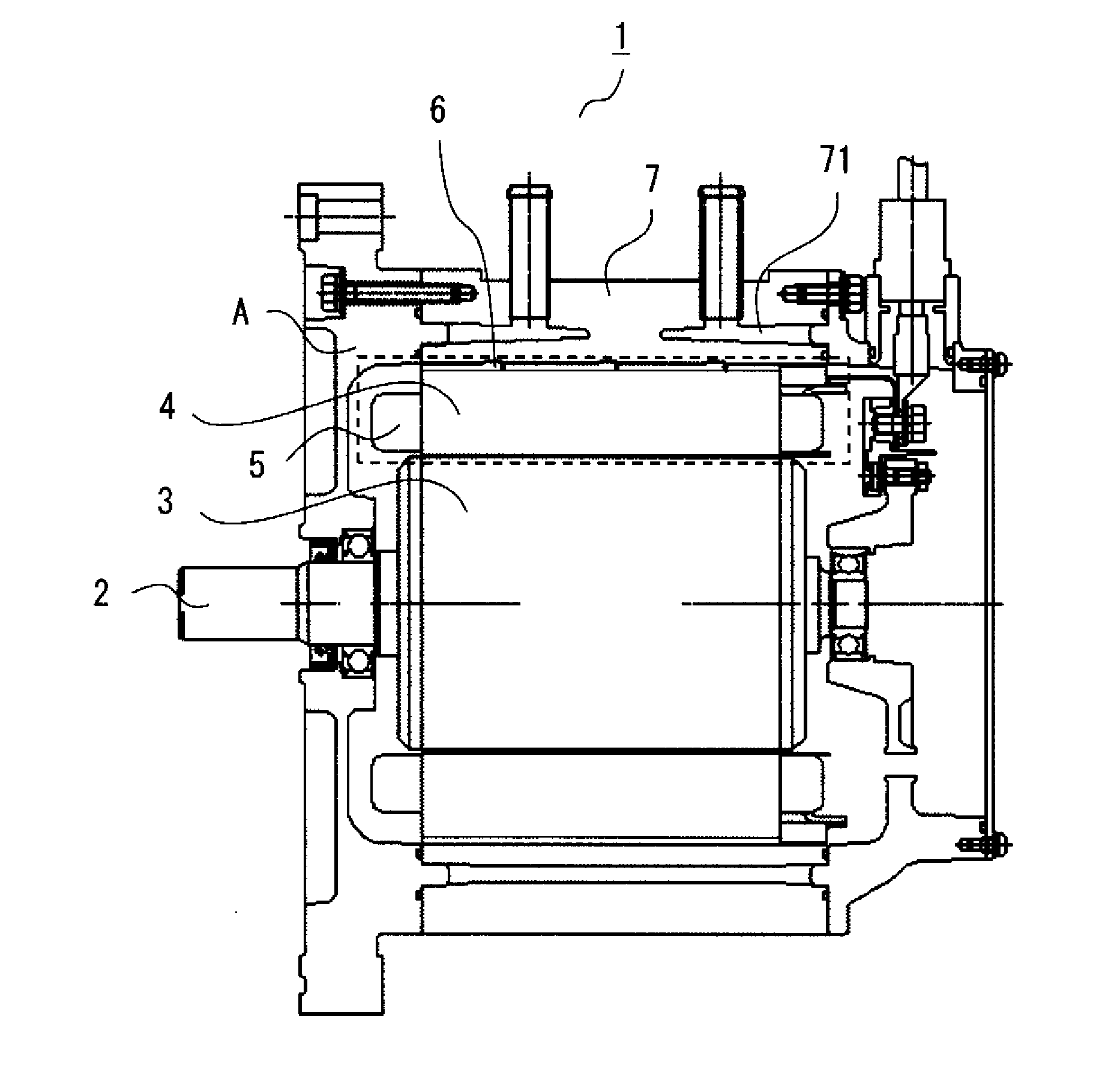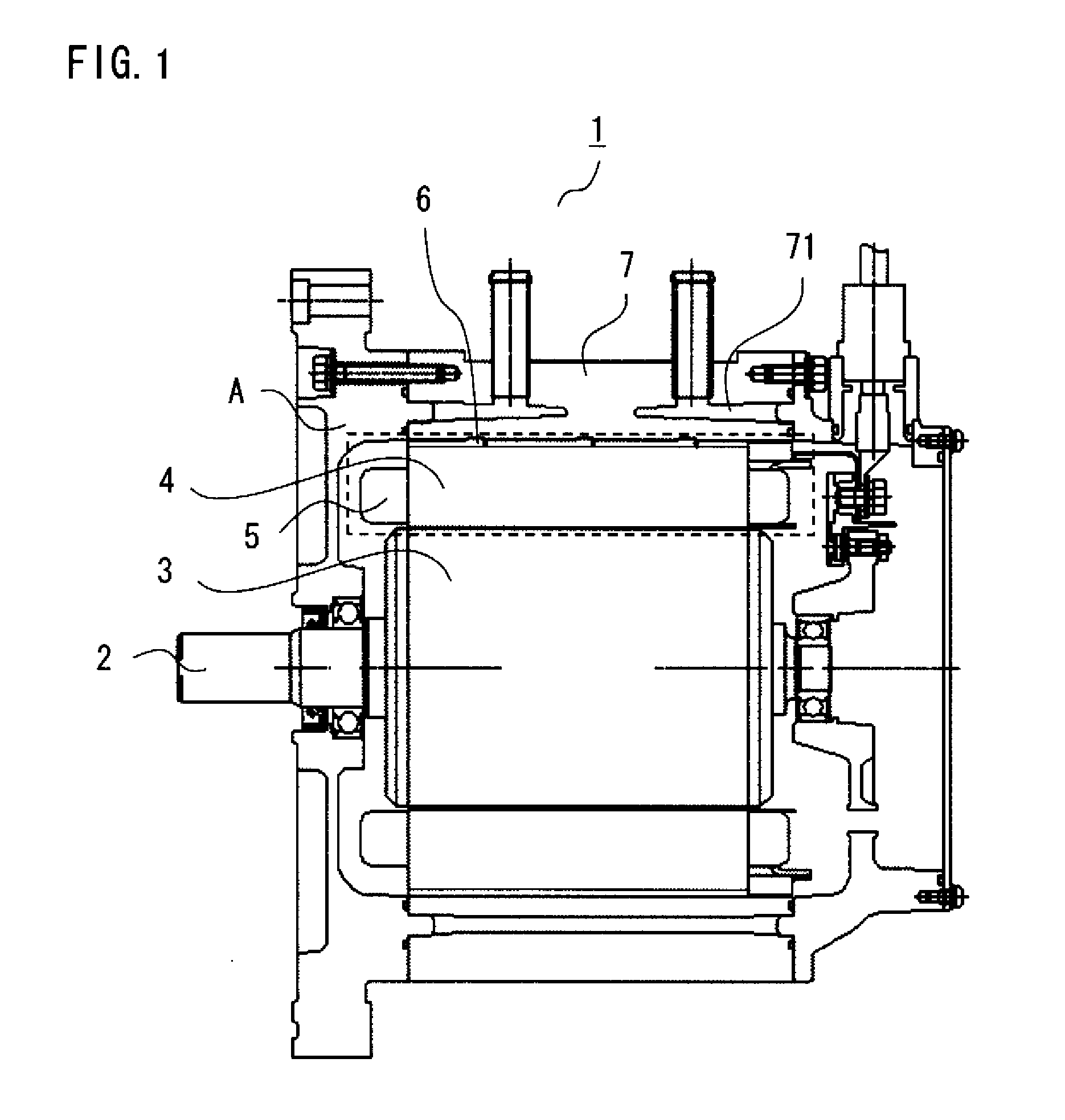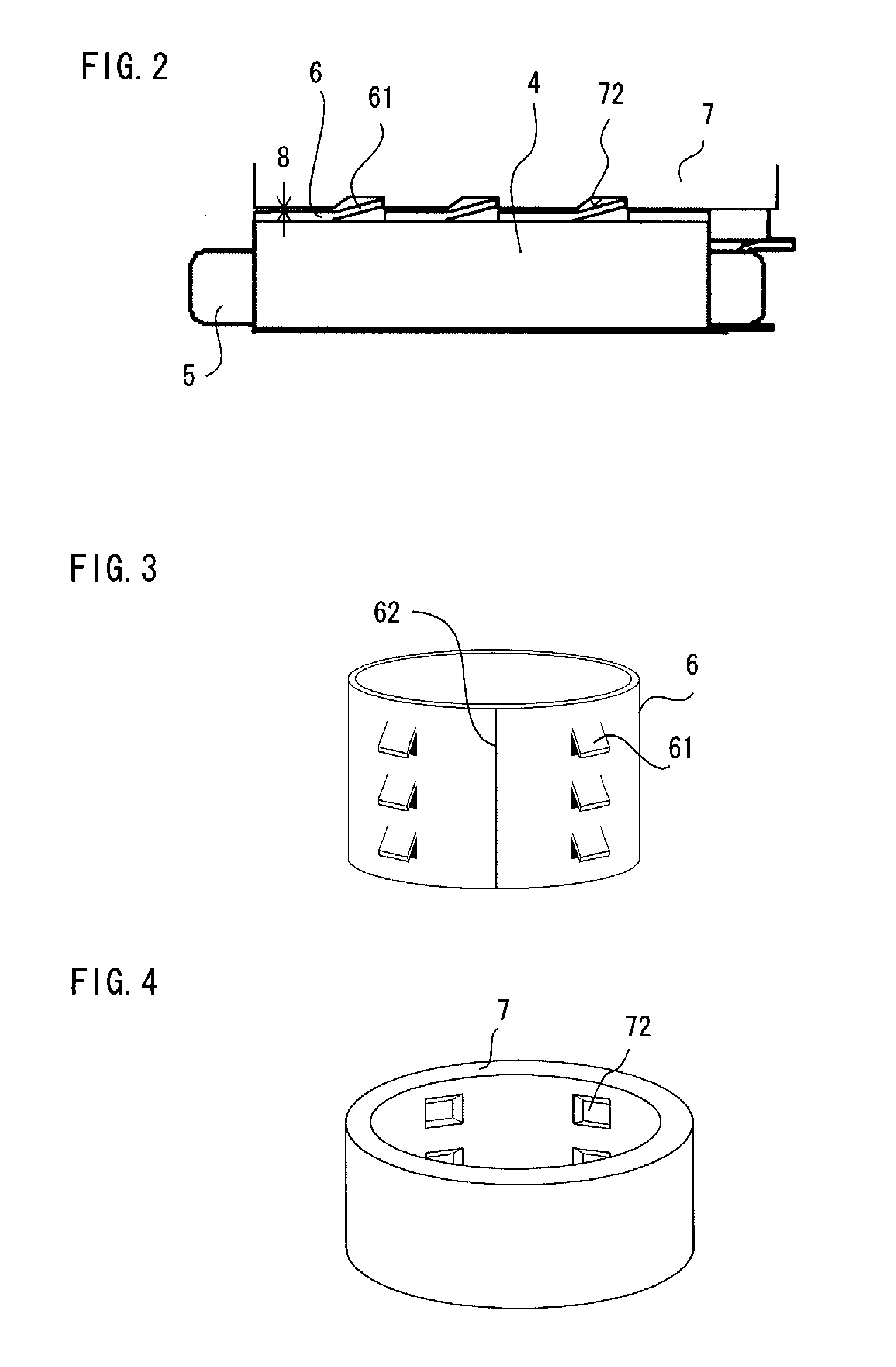Rotary electric machine
- Summary
- Abstract
- Description
- Claims
- Application Information
AI Technical Summary
Benefits of technology
Problems solved by technology
Method used
Image
Examples
first embodiment
[0028]FIG. 1 is a cross-sectional diagram illustrating the configuration of a rotary electric machine 1 according to a first embodiment of the present invention.
[0029]As depicted in FIG. 1, the rotary electric machine 1 includes a rotor 3 mounted on a rotary shaft 2, a ring-shaped stator 4 arranged to surround an outer surface of the rotor 3. The stator 4 essentially made of iron is a split-type stator including a plurality of stator pieces on which coils 5 are wound, the stator pieces being arranged in a ringlike structure. On the outside of an outer periphery of the split-type stator 4, there is provided a cylindrical, thin-walled ring member 6 made of iron which is the same material as that of the stator 4. The ring member 6 and the stator 4 are fixed on a common axis with the ring member 6 mounted on the stator 4 by shrinkage fitting. On the outside of an outer periphery of the ring member 6, there is disposed a cylinder-shaped aluminum frame 7 having an inside diameter which is...
second embodiment
[0060]FIG. 9 is a perspective view depicting the structure of a ring member 6B of a rotary electric machine 1B according to a second embodiment of the present invention. The ring member 6B has a second hooking part 63 which serves as a supporting portion in addition to hooking parts 61 which are structured in the same fashion as those of the above-described first embodiment. The second hooking part 63 of the second embodiment which is located at an uppermost axial end (as illustrated) of the ring member 6B is formed by cutting and bending part of the ring member 6B along a direction deviating from a cut-and-bend direction of the hooking parts 61 by 90 degrees. A frame 7B which supports the ring member 6B is provided with a second recess in which the second hooking part 63 is retained at a location corresponding to the second hooking part 63. The rotary electric machine 1B is structured in otherwise the same fashion as the rotary electric machine 1 of the foregoing first embodiment, ...
third embodiment
[0062]FIG. 10 is a perspective view depicting the structure of a ring member 6C of a rotary electric machine 1C according to a third embodiment of the present invention. The ring member 6C employed in this embodiment is a tolerance ring of which entire ring structure has a springy characteristic. Specifically, the ring member 6C employed in the third embodiment is a tolerance ring having a plurality of protrusions 64 formed on an outer surface of the ring member 6C to extend along an axial direction thereof. A frame 7C employed in the third embodiment has a simple thin-walled cylindrical structure unlike the ring member 6 of the first embodiment in which the recesses 72 are formed. The plurality of protrusions 64 serve as supporting portions for supporting the ring member 6C within the frame 7C. To be more specific, the protrusions 64 serving as the supporting portions are in contact with an inner surface of the frame 7C so that the ring member 6C is supported on the inside of the f...
PUM
 Login to View More
Login to View More Abstract
Description
Claims
Application Information
 Login to View More
Login to View More - R&D
- Intellectual Property
- Life Sciences
- Materials
- Tech Scout
- Unparalleled Data Quality
- Higher Quality Content
- 60% Fewer Hallucinations
Browse by: Latest US Patents, China's latest patents, Technical Efficacy Thesaurus, Application Domain, Technology Topic, Popular Technical Reports.
© 2025 PatSnap. All rights reserved.Legal|Privacy policy|Modern Slavery Act Transparency Statement|Sitemap|About US| Contact US: help@patsnap.com



